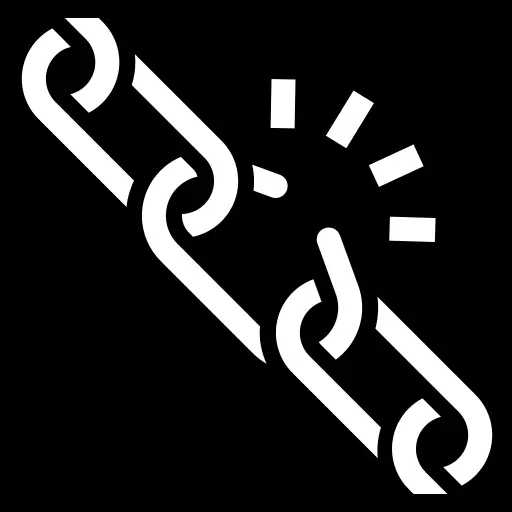I think I agree with Robin D.G. Kelly that we can work toward and organize for abolition under capitalism, but that abolition itself also requires that capitalism be abolished alongside the police and prisons. Capitalism needs police and prisons to absorb surplus populations and as a means to keep proletarian unrest under foot. Capitalism cannot survive if prisons and police are abolished. Likewise, police and prisons need the wealth expropriated from the working class in order to maintain the police and prisons, as these things do not produce value in of itself.
Any interest in returning to this conversation? I’m involved in abolitionist organizing in Arkansas, USA, but after recently reading The State and Revolution, I’ve gotten kinda shaken about this very question posed by @mambabasa@slrpnk.net. I will write a bit below about some of the important take-aways from this text, but in the case of tl;dr I guess what I’m especially interested in is this conversation that Robin D.G. Kelly encourages. Could you drop some links to where Kelly says this, whether that’s in these comments or in their own posts? Looking forward to it :) -Clairexo
In The State and Revolution, the key points about policing are made by way of Engels and Marx, quoting from The Origin of the Family, Private Property and the State:
But in order that these antagonisms, these classes with conflicting economic interests, might not consume themselves and society in fruitless struggle, it became necessary to have a power, seemingly standing above society, that would alleviate the conflict and keep it within the bounds of ‘order’; and this power, arisen out of society but placing itself above it, and alienating itself more and more from it, is the state."
The modern state has two distinguishing features: dividing its subjects according to territory, and establishing a public power. Regarding the latter:
The second distinguishing feature is the establishment of a public power which no longer directly coincides with the population organizing itself as an armed force. This special, public power is necessary because a self-acting armed organization of the population has become impossible since the split into classes… This public power exists in every state; it consists not merely of armed men but also of material adjuncts, prisons, and institutions of coercion of all kinds, of which gentile [clan] society knew nothing…" “It [the public power] grows stronger, however, in proportion as class antagonisms within the state become more acute, and as adjacent states become larger and more populous. We have only to look at our present-day Europe, where class struggle and rivalry in conquest have tuned up the public power to such a pitch that it threatens to swallow the whole of society and even the state."
As @Five@slrpnk.net noted, prisons aren’t unique to capitalist societies; they are necessary to any authoritarian system. An authoritarian system requires prisons and policing in order to manage political dissent. A capitalist system, to whatever degree it’s clearly authoritative, requires prisons and policing in order to maintain some form of equilibrium amid the inherent antagonism between classes. Since I’ve just recently begun studying Marxism, I’m partial to the argument that capitalism’s end comes through a workers’ revolution, and that the revolutionaries will require systems of force such as an army in order to engage in self-defense lest the bourgeoisie regain power. I’m open-minded about this, I just haven’t yet had any conversations with people who are both serious about PIC abolition and informed in the basic theories of political economy underlying Marxism.
When it comes to building an army for self-defense, I’ve been impressed by the system described in Homage to Catalonia where ‘ideologues’ were responsible for political and military discipline, who as opposed to Soviet commissars, had no authority to punish or imprison. A combination of a chaplain and nco, their job was to maintain morale and observe that humanitarian and anarchist principles were observed even at the point of contact with the enemy.
It should be noted in the early days of the Makhnovshchina and the Spanish Civil War, conscription wasn’t necessary. The YPJ is another all-volunteer military formation. The Spanish anarchists whose lightning mobilization stopped the coup and made up the ranks of most of the early military fronts were all volunteers, joining as affinity groups or mobilized from syndicate organizations.
Another example of how abolition can support revolution, one of the first adventures of the Iron Column during the Spanish Civil war was the liberation of San Miguel de los Reyes prison and burning its records. Many of the prisoners released joined the force. Several key militants in the fight were survivors of incarceration, such as Buenaventura Durruti.
As the Fascists were re-enforced by Hitler and Mussolini, and every government but Stalin’s abandoned the Republican forces, the situation on the ground changed. Conscription and the replacement of Ideologues with Commissars happened at the same time, one could argue that neither institution could exist without the other.
While Nestor Makhno’s insurgent army was fueled by the social revolution it enabled, its tactical innovations that lead to early successes and Makhno’s force of character were unique features that also drove enlistment. In its later days it is true that they began pressing men into service. Available now in hindsight, a common feature as both armies were falling back on conscription was that the revolution they were fighting for was already a lost cause.
Mass mobilization for self-defense is not incompatible with revolution and abolition, and does not necessarily imply systems of coercion.
Kelley says the things I mentioned at the Socialism 2023 Conference.
Lenin says a lot of things in S&R that can be contradictory, but on this specific matter about proletarian power during the dictatorship of the proletariat, he is correct. The proletariat needs a force to enforce their class rule. This cannot be confused with police or prisons. The armed force is the whole proletariat armed, whose political power flows not from the barrel of guns but from their ability to subvert and overturn their proletarianization. The problem with Lenin is that, whatever the reasons, he precisely ignored his own theory and set up his own police and prisons.
A final point, I disagree with Five over here on that police and prisons aren’t specific to capitalism. Lenin’s system was capitalist, he admitted so himself. The later USSR was capitalist too. There’s a lot of different ways to define capitalism, but my favorite way is to define it with the historical contingency of the proletariat. Proletarian existed and their conditions did not tend towards the abolition of their class, therefore the system is capitalist.
Sure, precapitalist systems had their dungeons and their armies that enforced carceral power, heck the Romans obviously had a word for it, but these systems are vastly different from the historically contingent form carcerality takes today. I would place these systems as seeds of police and prisons, but not as how we understand these concepts today. It is also telling these carceral seeds co-emerged with capitalist seeds.
Prisons seem to be a feature of all modern authoritarian systems. Gulags in the former Soviet Union were known for separating people from their communities and shipping them to remote areas of the territory. They were famously described as an archipelago due to their isolation from Soviet society and their island-like separation from each other. While Siberian labor camps existed under the Russian Empire, they were expanded under Stalin’s regime to be the primary form of punishment for political dissent. Their purpose has been adapted and enlarged under the Russian Federation with the introduction of western market reforms. Along with ‘free-market’ changes, prisons in population centers were revitalized and now operate in tandem with Siberian work camps as a single Federal Penitentiary Service.
The state of California holds more people captive than the Soviet Union at its most oppressive, and holds an even larger portion of the population. Over half of California prisons and 80% of prisoners are located more than 50 miles from major population areas, often in places called ‘prison towns’ where the biggest employer is the CDCR. These modern gulags are designed to sever the ties between incarcerated people and their communities, and impose exorbitant costs on families of the victims to maintain proximity. People are shuttled between these remote prisons to undermine friendships and alliances they form inside prison communities, with the intention to undermine political organization within prisons.
The prison system is structural to capitalism, and a testament to its authoritarian nature. If prisons and police were abolished, capitalism would collapse like a building under demolition. Prison is a load bearing structure in the pyramid of all authoritarian systems.



